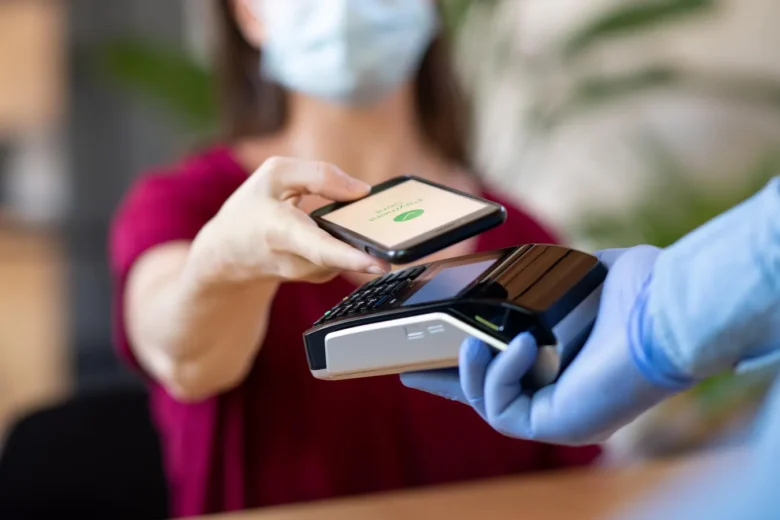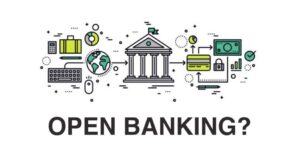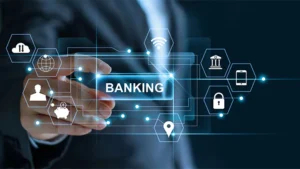The way people handle money has changed significantly in recent years. One of the most striking shifts is the transition to a cashless society, where digital payments replace cash. Technological advancements and evolving consumer preferences drive this change. Smartphones, mobile apps, and high-speed internet connections have made cashless payments easier than ever . People now expect purchases to be quick, easy, and secure, and contactless and cashless solutions meet these needs. The ongoing transformation of digital banking is making this lifestyle the new norm.
Understanding Contactless Payments
Contactless payments refer to transactions that do not require your card or device to come into contact with a payment terminal. NFC (Near Field Communication) is one of the technologies that makes contactless payments possible. It allows people to pay by simply holding their card or smartphone against a terminal. People prefer contactless payments because they are quick and easy to use. You don’t need to enter a PIN or pay with cash; a tap is enough. This technology has also proven to be cleaner, especially during a global health crisis when contact limitation is crucial.
Mobile Banking and Digital Wallets
Digital wallets have become an essential part of a cashless lifestyle. These apps or services keep your payment information secure on your phone. Digital wallets like Apple Pay, Google Pay, and Samsung Pay allow users to shop in stores and online and even send money to friends. Mobile banking apps further enhance this functionality, giving users full access to their financial accounts, allowing them to check balances, transfer money, and process transactions in real time. These features eliminate the need for frequent trips to the bank or ATM, making the switch to digital banking more attractive.
Security in a Contactless World
Security is a common concern in a digital banking lifestyle. However, most digital payment systems protect consumers by using advanced encryption, tokenization, and biometric authentication. Contactless debit cards have built-in security features that are difficult for fraudsters to copy. Digital wallets offer additional security by requiring fingerprints, facial recognition, or a PIN before transactions can be completed. Users can remotely lock or wipe a lost or stolen device to prevent access. Digital banking has generally transformed, offering a secure way to make financial transactions that is often safer than cash.
Faster Transactions, Less Waiting
A major advantage of a contactless lifestyle is the speed of transactions. When shopping for groceries, paying for transportation, or dining out, contactless payments are much faster than cash or chip payments. This shortens lines, reduces wait times, and improves efficiency for both customers and businesses. Consumers appreciate the convenience of paying, and businesses appreciate the speed with which they acquire new customers. Because of their efficiency, contactless payments are an excellent way to make everyday payments.
Easier Money Management
Cashless payments also help people better manage their money. Every digital transaction is saved instantly, making it easy to track your spending and understand how your money is being used. Many mobile banking apps offer budgeting tools, spending categories, and monthly reports. These insights can help people make smart financial decisions and avoid unnecessary spending. While using cash can make it harder to track where your money goes, digital payments record everything and make it accessible at any time. Anyone who wants to better manage their money can benefit from this openness.
Inclusivity and Accessibility
Digital banking is also a solution for people who don’t have access to the traditional banking system. People in remote or underserved areas now only need a smartphone and an internet connection to open a bank account, receive payments, and make purchases. Many digital banks offer intuitive and user-friendly interfaces, making them particularly suitable for the less tech-savvy. This allows people who were previously excluded from the financial system to fully participate in the digital economy, improving their financial well-being.
Impact on Businesses and the Economy
The growing popularity of contactless and contactless payments also has implications for businesses and the wider economy. Businesses of all sizes benefit from faster transactions, less cash handling, and simplified administration. Digital payments make it easier to track inventory, analyze sales, and manage customer relationships. Governments also benefit from increased transparency, reduced tax evasion, and improved financial support options. As more businesses move online, digital banking offers convenience for individuals and becomes a key driver of economic growth and modernization.
Conclusion
Digital banking, including contactless and contactless transactions, is changing the way we handle money. It’s the best option in today’s connected world because it’s convenient, secure, quick, and helps you manage your money better. As more people use digital wallets, mobile banking, and tap-to-pay technologies, the trend toward a fully digital financial system is becoming increasingly clear. This change benefits businesses, consumers, and governments alike, making the economy more open and user-friendly. While challenges remain, especially in areas with limited internet connectivity, the trend is clear: living cashless and contactless payments are here to stay and will change the future of banking for everyone.
FAQs
1. Is it safe to go cashless?
Yes, cashless payments are safe when supported by encryption, biometrics, and fraud detection systems. Digital banking generally has more security layers than cash.
2. Do I need a smartphone to live cashless?
Smartphones offer a better experience, especially with mobile wallets and apps, but you can also use a tap-and-go card for many contactless purchases.
3. Do digital payments help me track my spending?
Of course. Your banking app or digital wallet records every transaction, giving you a clear picture of your spending.
4. What if I lose my phone or debit card?
You can use an app to quickly block your card or device, and most banks will send you a new or virtual card so you can continue using it.
5. Are cashless payments accepted everywhere?
Cashless payment acceptance is growing rapidly, especially in cities and industrialized countries. However, some small businesses and rural businesses still prefer cash or only accept cash.




